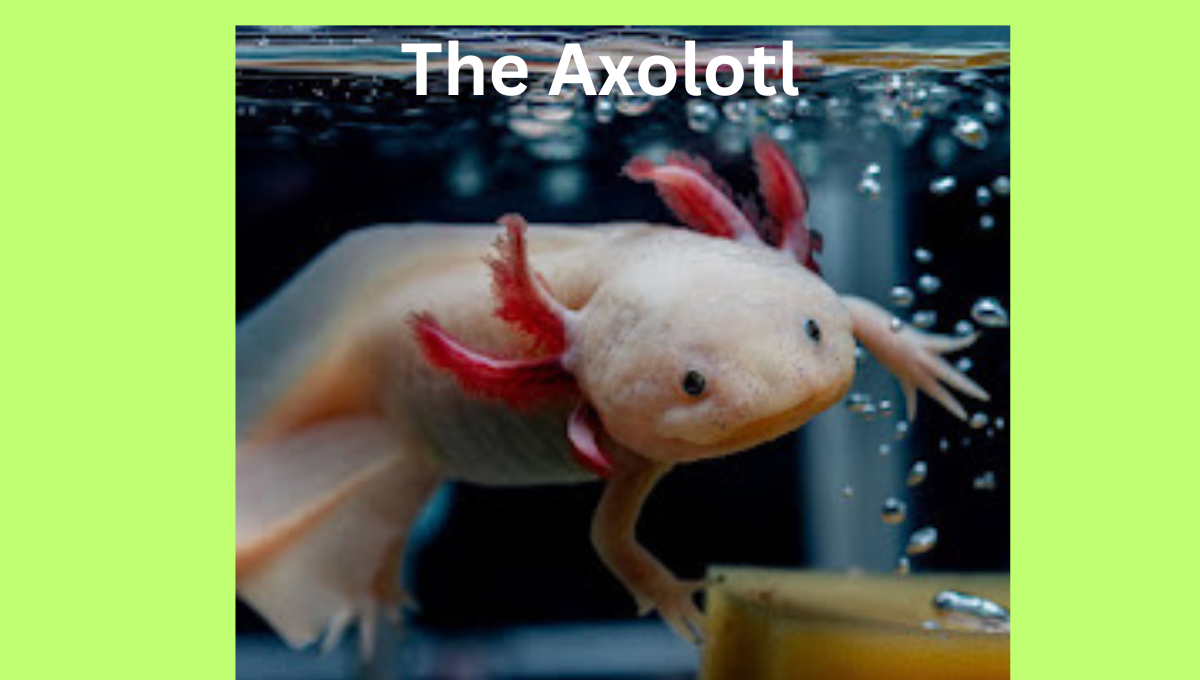Contents
The Axolotl
The Axolotl: The Eternal Larva A fascinating creature with unique regenerative abilities
Axolotls are neotenic salamanders, meaning they retain their larval features even as they reach sexual maturity. This makes them appear like perpetual juveniles, with their feathery external gills, tadpole-like tails, and lack of eyelids. Native to the freshwater lakes and canals of Xochimilco, Mexico, axolotls have become popular aquarium pets due to their endearing appearance and gentle nature.
Anatomy of Axolotls
Axolotls are about 6-18 inches long, with a slender body and a large, rounded head. Their skin is smooth and slimy, and they come in a variety of colors, including albino, black, and leucistic (lacking pigment). Their most distinctive feature is their external gills, which protrude from the back of their head and are used to extract oxygen from the water. They also have a caudal fin, which helps them swim. Axolotls have rudimentary teeth, which they use to scrape algae and small invertebrates from rocks and plants.
Regeneration
One of the most remarkable abilities of axolotls is their remarkable regenerative abilities. They can regenerate limbs, tails, spinal cord tissue, and even large portions of their hearts. This regenerative capacity is due to their ability to maintain pluripotent stem cells throughout their lives. These stem cells can differentiate into a variety of cell types, allowing the axolotl to repair damaged tissues.
Ecology
Axolotls are carnivorous and feed on a variety of small invertebrates, including worms, crustaceans, and insect larvae. They are nocturnal animals and spend most of their time hiding in rocks and plants. Axolotls are important predators in their ecosystem, and they help to control populations of insects and other pests.
Threats to Axolotls
Axolotls are endangered in the wild due to a number of factors, including habitat loss, pollution, and the introduction of invasive species. In addition, axolotls are often captured for the pet trade, which further depletes their wild populations.
Conservation Efforts
There are a number of conservation efforts underway to protect axolotls in the wild. These efforts include habitat restoration, captive breeding programs, and public education campaigns. In addition, scientists are working to identify and address the threats that are facing axolotls in the wild.
Axolotls as Bioindicators
Axolotls are sensitive to changes in their environment, and they are being used as bioindicators to assess the health of freshwater ecosystems. By monitoring axolotl populations, scientists can identify early signs of pollution and other environmental stressors.
Future of Axolotls
Axolotls are a fascinating species with unique regenerative abilities that are of great interest to scientists. With continued conservation efforts, axolotls have the potential to thrive in the wild and continue to play an important role in their ecosystem.
Conclusion
Axolotls are truly remarkable creatures that have captured the imagination of people around the world. Their unique regenerative abilities and endearing appearance make them one of the most popular aquarium pets. With continued research and conservation efforts, we can ensure that axolotls continue to thrive in the wild for generations to come.
